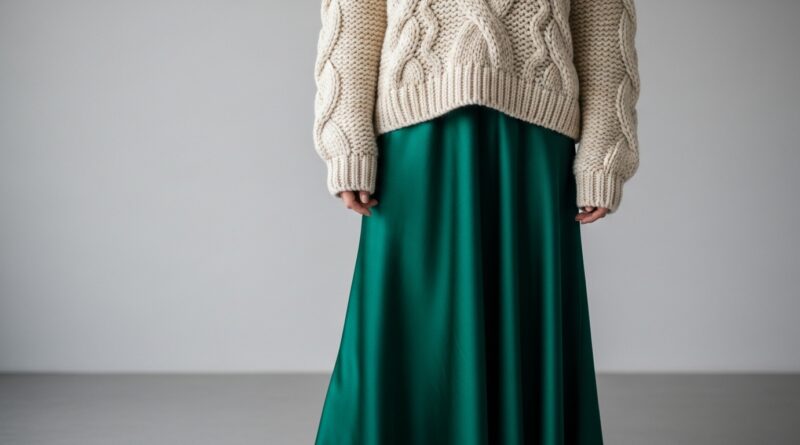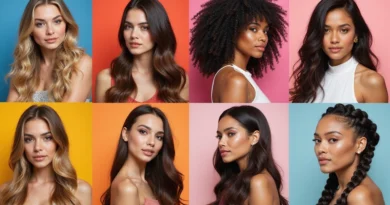12 Subtle Changes That Make Your retro lob Look Brand New
There’s a unique magic in retro style. It’s more than just fashion; it’s a narrative woven from the threads of past decades, telling stories of glamour, rebellion, and timeless elegance. Whether you’re a dedicated disciple of 70s boho, 80s power dressing, or 90s minimalism, the challenge often lies in keeping your look fresh and relevant, rather than feeling like a costume. The goal isn’t to erase the past, but to converse with it.
So, how do you honor the classics while ensuring your style feels contemporary and uniquely yours? The answer lies in the subtle, thoughtful updates. It’s about the art of the mix, the clever edit, and the modern accessory that bridges decades. We’ve curated 12 subtle changes that will breathe new life into your retro wardrobe, making it look and feel brand new.
1. The Power of Modern Footwear
Perhaps the single most effective way to modernize a vintage outfit is with your choice of shoes. A 1950s fit-and-flare dress suddenly feels less costumey when paired with clean, minimalist white sneakers or sleek ankle boots instead of traditional saddle shoes. Similarly, a pair of high-waisted, wide-leg denim from the 70s gets an instant update with contemporary block heels or architectural sandals. Footwear acts as a stylistic anchor, grounding your look firmly in the present.
The key is contrast. Let the vintage elements shine in the silhouette and fabric, while your shoes provide a clean, modern baseline. This creates a dynamic tension that is the hallmark of sophisticated, modern-vintage style.

2. Reimagine Vintage Silhouettes with Contemporary Fabrics
Vintage patterns are iconic, but they can sometimes feel dated if replicated exactly. A powerful trick is to take a classic silhouette and have it rendered in a modern, unexpected fabric. Imagine a 1960s shift dress, but instead of a traditional wool or tweed, it’s made from a technical neoprene, a soft bamboo knit, or a sleek vegan leather.
This approach maintains the integrity of the design while completely transforming its texture, weight, and overall feel. A 1940s-style blouse in a fluid, drape-y viscose feels more luxurious and current than the original stiff cotton. Seek out modern makers who specialize in this fusion, or work with a tailor to create a custom piece that is truly one-of-a-kind.

3. The “One Modern Piece” Rule
This is a foolproof formula for daily dressing. For any outfit that leans heavily vintage, consciously incorporate one unequivocally modern item. If you’re wearing head-to-toe 1970s—flared trousers, a silk scarf, and oversized sunglasses—add a structured, minimalist blazer from a current designer.
If your look is pure 1980s excess with shoulder pads and bold prints, balance it with simple, straight-leg, contemporary denim. This rule prevents your outfit from becoming a time capsule and instead frames it as a deliberate, stylish choice. It shows you understand the language of style across decades and can blend them seamlessly.

4. A Contemporary Hair and Makeup Approach
Nothing locks a look into a specific era like period-accurate hair and makeup. A victory roll hairstyle and red cupid’s bow lips will firmly plant you in the 1940s, regardless of your clothing. To make a vintage outfit feel new, pair it with a modern beauty aesthetic.
Think loose, natural waves instead of tight pin curls, or a fresh, dewy face with bold brows instead of heavy, matte foundation and thin, drawn-on eyebrows. Your beauty look should be a bridge, not a barrier. A modern makeup look tells the world you’re wearing the clothes, not that the clothes are wearing you.

5. Curate Your Accessories Wisely
Accessories are the jewelry box of your style identity, but an over-reliance on vintage pieces can clutter the look. Edit your vintage jewelry collection and focus on one or two statement pieces per outfit. Then, complement them with modern, understated items.
Pair a beautiful, ornate Art Deco brooch with a simple, modern gold chain necklace. Wear those fabulous 80s statement earrings, but skip the vintage bangles in favor of a single, sleek modern watch. The same goes for bags—a vintage purse can be charming, but a modern, geometric clutch or a simple leather tote can elevate the entire ensemble.

6. Play with Proportions
Every era has its own distinct proportion rules. The 50s favored cinched waists and full skirts. The 90s loved long, lean lines. Playing with these rules is a sophisticated way to update your look. Try tucking a slinky 90s slip dress into high-waisted, wide-leg trousers for a fresh take on evening wear.
Or, layer a cropped, modern sweater over a high-waisted, full 50s skirt. Mixing proportional signatures from different decades creates a silhouette that is entirely new and uniquely yours. It demonstrates a deep understanding of style that goes beyond simple replication.

7. Introduce Neutral and Earthy Tones
While the vibrant palettes of the past are joyful, they can also feel overwhelming. A subtle way to calm a vintage piece and make it feel more modern is to integrate it into a neutral color story. Style a brightly colored 60s mod dress under a beige or oatmeal-colored trench coat.
Pair those electric 80s turquoise trousers with a simple white t-shirt and a camel-colored cardigan. By framing bold vintage colors with sophisticated, quiet neutrals, you allow the piece to pop without overwhelming the senses, creating a more balanced and contemporary outfit.

8. Focus on Modern Undergarments
This is a change no one sees but everyone feels. The foundation of a great silhouette has evolved. While vintage undergarments like bullet bras and girdles have their place for achieving a specific period look, they can often feel restrictive for daily wear.
Modern shapewear, seamless underwear, and comfortable, supportive bras made from advanced fabrics provide a smooth, contemporary foundation. This can subtly alter how a vintage garment hangs on your body, often making it more comfortable and giving it a more modern, less costumed line.

9. The Art of Strategic Distressing and Repair
For vintage denim or workwear, a little strategic modernizing can go a long way. A pristine pair of 501s is classic, but a subtle, well-placed fray at the hem or a small, artful repair can add a layer of contemporary, lived-in cool.
This isn’t about creating massive holes, but about adding character. Look into visible mending techniques using modern contrasting threads, or have a tailor create a raw hem on vintage trousers. This approach honors the history of the garment while infusing it with a current, artisanal sensibility.

10. Layer with Contemporary Basics
The humble modern basic is your best friend in a vintage-heavy wardrobe. A simple, high-quality white t-shirt, a thin black turtleneck, or a ribbed tank top can act as a neutral canvas for your vintage statements. Layer a turtleneck under a 60s sleeveless shift dress.
Wear a simple white tee under a 70s corduroy pinafore. This technique not only makes vintage pieces more wearable across seasons but also breaks up the “head-to-toe” effect, grounding the look in effortless, modern simplicity.

11. Update Your Outerwear
Your coat is often the first and last thing people see. Throwing a modern coat over a vintage outfit is an instant style reset. Imagine a delicate 1930s tea dress paired with a sharp, oversized modern trench coat. Or a 90s grunge plaid shirt and jeans combo elevated by a sophisticated, long-line wool coat.
Modern outerwear acts like a frame around a painting, providing context and pulling the entire look into the present day. Invest in classic, well-cut contemporary coats in neutral colors—they are the ultimate tool for modernizing any ensemble.

12. Embrace Modern Textures and Weaves
Finally, pay attention to the language of texture. Just as with fabric choices, introducing modern textiles into your vintage mix can be revolutionary. Pair a chunky, vintage 80s knit sweater with a fluid, silky midi skirt. Drape a sleek, faux fur stole (in a modern color like grey or blush) over a 50s cocktail dress.
The contrast between a nubby, nostalgic texture and a smooth, contemporary one adds incredible depth and visual interest to your outfit. It’s a subtle signal of a well-honed, modern sensibility that appreciates the past but lives firmly in the now.

Conclusion: Your Style, Your Timeline
Revitalizing your retro look isn’t about abandoning the styles you love. It’s about evolving them alongside you. By implementing these subtle changes—mixing in modern footwear, playing with proportions, updating your beauty routine, and thoughtfully curating your accessories—you transform your wardrobe from a museum of the past into a dynamic, living expression of your personal style.
The most timeless style is always personal. It’s the confidence that comes from wearing pieces that have history, presented in a way that is utterly and authentically you, right here, right now. So go ahead, open your closet, and start the conversation between decades. You might just create a look that defines the future.



